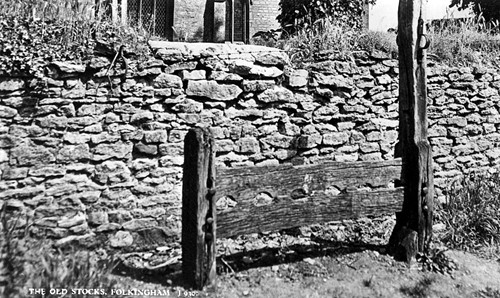
Crime and punishment

| CRIME WAS widespread in
Bourne in past times and punishment for offenders was swift and harsh.
Most of the felonies were petty theft involving money, valuables, clothing
and often animals. There were many tricksters and pickpockets about and
travellers were likely to be robbed by highwaymen. Bourne had its stocks where wrongdoers would be locked in by the legs and pelted with stones, rotten fruit and bad eggs. They stood at the edge of the market place at the top of what is now Abbey Road together with a whipping post where miscreants were punished even for disorderly conduct. One lad who had been a particular nuisance in the town, Daniel Summerby, who worked as a slater, was described as being "malicious, desperate and unruly" and on his last appearance before the magistrates in 1688 for rowdy and disorderly conduct was told that if he offended again he would "be taken to the common whipping post, there to be whipped till blood come". The warning appears to have been timely because there are no further reports of him causing trouble. Poaching and common assault were also serious crimes and husbands could
also be summoned for not looking after or deserting their families. Public
executions and transportation to the colonies such as Australia and
America still figured in court judgments well into the 19th century and
many of the cases reflect a legal system that often appears harsh and
vindictive.
During the early part of the 20th century, the courts were dealing mainly with minor infringements of the law such as speeding, begging, drunkenness and petty theft, and the cases reflected the ubiquitous presence of the police who were either out and about on the beat or patrolling on their cycles. Soaring administrative costs in the years following the Second World War eventually made such prosecutions unviable and now only the more serious cases find their way into the courts while many lesser crimes are now labelled as anti-social behaviour and often ignored.
|
Go to The railway age or return to Contents
![]()